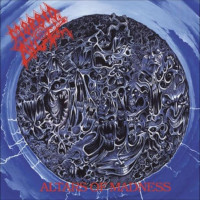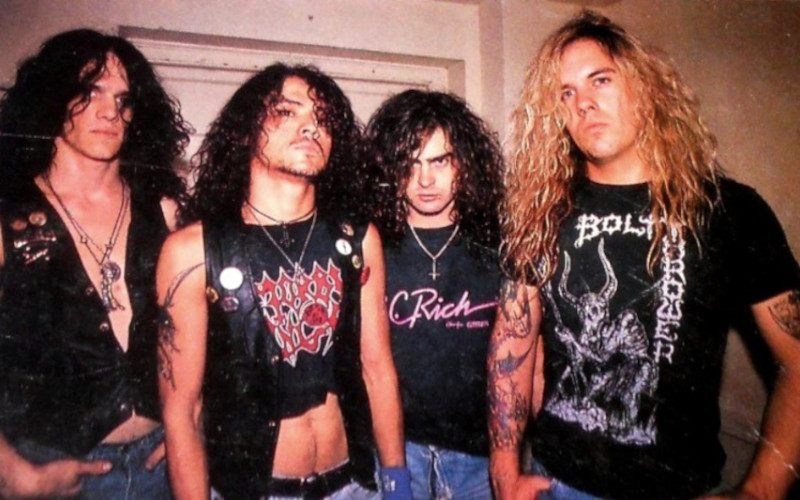Among the earliest bands to start playing the music that would be known as Death Metal were Flordians Morbid Angel—a band that would go on to set new standards for the way the music would be played, helping define the genre and influence countless others bands that would follow in their path (including mine). Known for their occult-themed lyrics (many of their early lyrics coming from the Necronomicon or Satanic standpoints), complex song structures, and extreme technicality, Morbid Angel stamped a legacy that only few would equal upon the genre.
Formation and Early Lineup (1983–1986)
Morbid Angel was formed in 1983 by guitarist Trey Azagthoth (born George Emmanuel III), who would become the band’s creative mastermind. He was heavily influenced by pioneering metal acts like Slayer, Venom, and Possessed. But even in those early years, Trey had a vision to go beyond, crafting music that was faster, darker, and more intricate than anything the metal scene had heard.
The band’s first lineup included Azagthoth, drummer/vocalist Mike Browning, and bassist John Ortega. This trio laid the foundation for what would become the Morbid Angel sound—an unholy fusion of speed, dissonance, and atmosphere. They soon recorded rough demos that showcased their raw talent and unique take on the extreme metal style.
Early Demos and Underground Buzz
Morbid Angel’s earliest demo tapes, including “Scream Forth Blasphemies” and “Bleed for the Devil,” began circulating in the underground metal scene by 1985. These rough but blistering recordings earned them a cult following, particularly among tape-traders and fanzine readers in the underground metal scene. Their raw, aggressive sound and blasphemous themes and obvious talent quickly set them apart from other Florida-based metal acts.
At this point, Morbid Angel had already begun experimenting with more complex song structures and blast beat-driven tempos, laying the groundwork for the death metal to follow. Trey Azagthoth’s use of alternate scales, warped solos, and chaotic arrangements would become a hallmark of their style.
Lineup Changes and Musical Evolution
By the mid-1980s, internal tensions and creative differences led to changes in the lineup. John Ortega departed, and new members, including bassist/vocalist David Vincent and drummer Mike Browning began to shape the band’s evolving direction. Vincent, who joined in 1986, brought a commanding vocal and stage presence and business savvy that would prove essential as the band moved toward the recording of their debut album.
Mike Browning, who had been a key part of the band’s early days, also exited the group following disputes, making way for new Pete Sandoval whom Vincent already played with in the band Terrorizer. These shifts helped define the next era of Morbid Angel, which would see them emerge from the underground and take their place on the global metal stage.
Legacy of the Early Years
While Morbid Angel would go on to international fame with albums like “Altars of Madness” (1989), it was their early years that forged the band’s unmistakable identity. By blending extreme aggression with technical mastery and esoteric themes, Morbid Angel helped shape the sound and philosophy of death metal itself.

|
For a more complete review of Morbid Angels’ album Altars of Madness be sure to read our review here |
